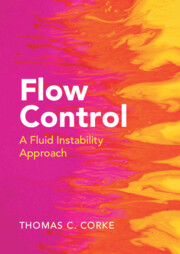Refine search
Actions for selected content:
58 results
9 - Big Hardware
-
- Book:
- Big Data in the Psychological Sciences
- Published online:
- 23 October 2025
- Print publication:
- 23 October 2025, pp 152-174
-
- Chapter
- Export citation
Wearable system for the measurement of gait cycle kinematic and kinetic signals
-
- Journal:
- Wearable Technologies / Volume 6 / 2025
- Published online by Cambridge University Press:
- 17 October 2025, e51
-
- Article
-
- You have access
- Open access
- HTML
- Export citation
Biomechanical effects of soft and rigid passive back occupational exoskeletons during load-carrying and static trunk bending tasks in the aeronautics industry
-
- Journal:
- Wearable Technologies / Volume 6 / 2025
- Published online by Cambridge University Press:
- 03 October 2025, e50
-
- Article
-
- You have access
- Open access
- HTML
- Export citation
Battery-free head orientation measurement using passive RFID tags
-
- Journal:
- Wearable Technologies / Volume 6 / 2025
- Published online by Cambridge University Press:
- 17 February 2025, e7
-
- Article
-
- You have access
- Open access
- HTML
- Export citation
Identifying internal and external shoulder rotation using a kirigami-based shoulder patch
-
- Journal:
- Wearable Technologies / Volume 5 / 2024
- Published online by Cambridge University Press:
- 16 December 2024, e23
-
- Article
-
- You have access
- Open access
- HTML
- Export citation
An introduction to linkage fabrics and their application as programmable materials
-
- Journal:
- Programmable Materials / Volume 2 / 2024
- Published online by Cambridge University Press:
- 23 May 2024, e5
-
- Article
-
- You have access
- Open access
- HTML
- Export citation
Fibre-based stretchable electrodes for flexible metamaterial electronics: A review
- Part of
-
- Journal:
- Programmable Materials / Volume 2 / 2024
- Published online by Cambridge University Press:
- 03 May 2024, e3
-
- Article
-
- You have access
- Open access
- HTML
- Export citation

Flow Control
- A Fluid Instability Approach
-
- Published online:
- 04 April 2024
- Print publication:
- 11 April 2024
1 - Introduction
-
- Book:
- Conjugated Polymers for Organic Electronics
- Published online:
- 28 March 2024
- Print publication:
- 04 April 2024, pp 1-19
-
- Chapter
- Export citation
4 - Poly(arylene ethynylene)s
-
- Book:
- Conjugated Polymers for Organic Electronics
- Published online:
- 28 March 2024
- Print publication:
- 04 April 2024, pp 54-60
-
- Chapter
- Export citation
Instrumented insoles for assessment of gait in patients with vestibular schwannoma
- Part of
-
- Journal:
- Wearable Technologies / Volume 4 / 2023
- Published online by Cambridge University Press:
- 10 May 2023, e14
-
- Article
-
- You have access
- Open access
- HTML
- Export citation
A wearable real-time kinetic measurement sensor setup for human locomotion
-
- Journal:
- Wearable Technologies / Volume 4 / 2023
- Published online by Cambridge University Press:
- 11 April 2023, e11
-
- Article
-
- You have access
- Open access
- HTML
- Export citation
Estimating ground reaction force with novel carbon nanotube-based textile insole pressure sensors
-
- Journal:
- Wearable Technologies / Volume 4 / 2023
- Published online by Cambridge University Press:
- 02 March 2023, e8
-
- Article
-
- You have access
- Open access
- HTML
- Export citation
Closing the Wearable Gap: Foot–ankle kinematic modeling via deep learning models based on a smart sock wearable
-
- Journal:
- Wearable Technologies / Volume 4 / 2023
- Published online by Cambridge University Press:
- 20 February 2023, e4
-
- Article
-
- You have access
- Open access
- HTML
- Export citation
Using sensors to detect individual responses of lambs during transport and pre-slaughter handling and their relationship with meat quality
-
- Journal:
- Animal Welfare / Volume 31 / Issue 4 / November 2022
- Published online by Cambridge University Press:
- 01 January 2023, pp. 505-516
-
- Article
-
- You have access
- Export citation
Automated assessment of infant motor development to predict infant age: The determination of objective metrics of spontaneous kicking
-
- Journal:
- Wearable Technologies / Volume 3 / 2022
- Published online by Cambridge University Press:
- 23 November 2022, e29
-
- Article
-
- You have access
- Open access
- HTML
- Export citation
Toward interpretable digital biomarkers of walking and reaching in Parkinson’s disease
- Part of
-
- Journal:
- Wearable Technologies / Volume 3 / 2022
- Published online by Cambridge University Press:
- 09 September 2022, e21
-
- Article
-
- You have access
- Open access
- HTML
- Export citation
Effort inference and prediction by acoustic and movement descriptors in interactions with imaginary objects during Dhrupad vocal improvisation
- Part of
-
- Journal:
- Wearable Technologies / Volume 3 / 2022
- Published online by Cambridge University Press:
- 05 July 2022, e14
-
- Article
-
- You have access
- Open access
- HTML
- Export citation
A didactic model to support the use of senses and sensors in environmental education problem solving
-
- Journal:
- Australian Journal of Environmental Education / Volume 39 / Issue 1 / March 2023
- Published online by Cambridge University Press:
- 22 June 2022, pp. 108-124
-
- Article
-
- You have access
- Open access
- HTML
- Export citation
25 - Tele-Trials, Remote Monitoring, and Trial Technology for Alzheimer’s Disease Clinical Trials
- from Section 3 - Alzheimer’s Disease Clinical Trials
-
-
- Book:
- Alzheimer's Disease Drug Development
- Published online:
- 03 March 2022
- Print publication:
- 31 March 2022, pp 292-300
-
- Chapter
- Export citation

